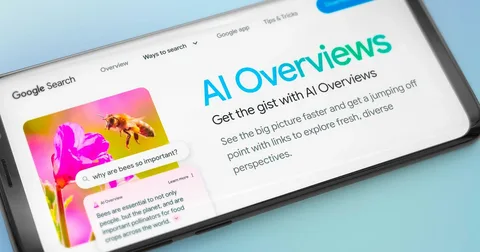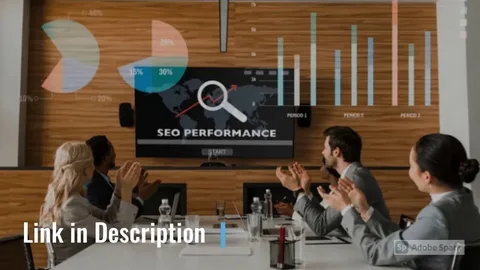As the digital landscape evolves with the rise of AI-powered search and content delivery, SEO professionals face a growing challenge: balancing performance optimization for both traditional search engines and AI driven answer systems. Understanding the distinctions between AI Overviews and Traditional SEO Performance Dashboards is essential to aligning content strategies with modern user behavior and ranking technologies.
What Are AI Overviews
AI Overviews are generated summaries or direct answers created by search engines or AI assistants using large language models. These overviews appear prominently in search results or within AI chat interfaces, presenting users with synthesized responses sourced from multiple web pages.
Optimizing for AI Overviews requires focusing on generative engine optimization or answer engine optimization. This involves structuring content so that AI models can easily retrieve, interpret, and reference it when generating responses.
What Are Traditional SEO Performance Dashboards
Traditional SEO Performance Dashboards are analytics systems that track and visualize search engine performance metrics. These include keyword rankings, organic traffic, click through rates, impressions, backlink profiles, site health, and conversions.
Dashboards are typically built using tools like Google Analytics, Search Console, Looker Studio, or third party SEO platforms. They serve as the foundation for measuring ROI, traffic growth, and on page SEO effectiveness.
AI Overviews vs Traditional SEO Dashboards
Objective and Visibility
AI Overviews aim to provide immediate answers to user queries, often eliminating the need for a click. The goal is to have your content cited or referenced within these summaries.
Traditional SEO focuses on ranking web pages in search engine result pages to attract clicks and generate traffic.
Performance Metrics
AI Overviews require tracking new indicators such as citation frequency in generative responses, relevance of content chunks, entity recognition, and zero click visibility.
Traditional Dashboards track organic search traffic, keyword positions, bounce rate, conversions, and user engagement.
Data Sources
AI Overview tracking relies on generative search logs, vector embeddings, and third party AI tracking APIs.
SEO Dashboards use structured data from platforms like Google Search Console, Analytics, and rank tracking tools.
User Interaction
AI Overviews often satisfy the query directly in the result, reducing clicks but increasing brand visibility.
Traditional SEO encourages users to click on search results to visit websites, enabling deeper engagement and conversions.
Optimization Strategy
For AI Overviews, optimization involves creating modular, entity rich, structured content with schema markup to enhance retrievability by AI systems.
For Traditional SEO, strategies include keyword targeting, on page SEO, technical site audits, backlink acquisition, and content depth.
Advantages and Limitations
AI Overviews
Advantages:
- Positions your content as an authoritative source
- Increases visibility in zero click environments
- Enhances topical authority and brand recognition
Limitations:
- Harder to track and quantify impact
- Less direct traffic compared to traditional search
- Requires constant adaptation to AI model changes
Traditional SEO Dashboards
Advantages:
- Clear performance tracking and ROI measurement
- Supports traffic growth and conversion optimization
- Compatible with mature analytics ecosystems
Limitations:
- May lose traffic as AI results replace traditional links
- Less influence in AI generated environments
- Overreliance on keyword ranking can miss intent shifts
How to Combine Both Approaches
To stay competitive, digital marketers must bridge the gap between SEO performance tracking and AI visibility.
- Set Dual KPIs: Measure both traditional SEO success such as traffic, rankings, and engagement, as well as AI Overview success such as citations and content retrievability.
- Use a Hybrid Dashboard: Combine metrics from Google Analytics and Search Console with AI specific indicators using custom dashboards in tools like Looker Studio or Excel.
- Structure Content for Both Audiences: Design content with clear headings, schema, and concise answers for AI systems, while maintaining keyword optimization and depth for SEO.
- Monitor Brand Mentions in AI Models: Use manual queries or tracking tools to check if your brand or content is being cited in AI generated answers.
- Leverage Entity Based Optimization: Strengthen your domain’s topical authority by reinforcing core topics, using semantic relationships, and aligning with high authority sources.
- Refine Continuously: Adjust strategies based on which content drives AI visibility and which drives traditional traffic. Use these insights to shape future content production.
What are AI Overviews in search?
AI Overviews are AI generated summaries that provide direct answers to user queries using information from multiple sources.
How do AI Overviews differ from traditional search results?
They often provide complete answers without requiring users to click on links.
What is the main goal of traditional SEO dashboards?
To track metrics like organic traffic, keyword rankings, and conversions for improving site visibility and performance.
Which metrics are unique to AI Overview optimization?
Citation frequency, entity relevance, content chunk retrievability, and zero click visibility.
Do AI Overviews drive website traffic directly?
Not always. They often satisfy user intent without a click, but increase brand visibility.
Can a page rank well and still not appear in AI Overviews?
Yes. Traditional ranking and AI citation depend on different content signals and structures.
What tools are used to build traditional SEO dashboards?
Google Analytics, Search Console, Looker Studio, and third party SEO platforms.
Why is entity based content important for AI visibility?
It helps AI models understand, connect, and cite your content more accurately.
Should businesses use both AI and traditional SEO strategies?
Yes. A hybrid approach maximizes visibility across both AI driven and search engine result environments.
How can you measure success in AI Overviews?
By tracking citations, mentions, structured content performance, and brand presence in generative results.
Conclusion
The rise of AI Overviews does not signal the end of traditional SEO. It expands the field. Marketers must adapt by aligning strategies to serve both human searchers and AI systems. Integrating AI focused content structure with conventional SEO measurement enables brands to remain discoverable, authoritative, and competitive in the next generation of search.


